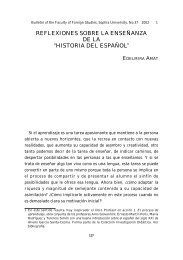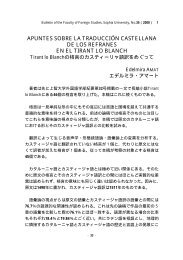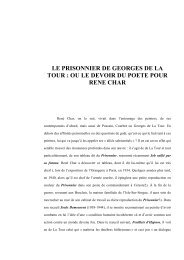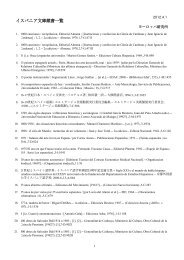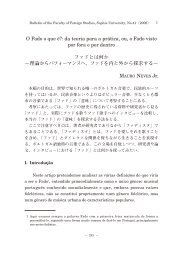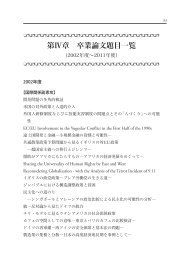Forgotten Paths to NEPA: A Historical Analysis of the Early ...
Forgotten Paths to NEPA: A Historical Analysis of the Early ...
Forgotten Paths to NEPA: A Historical Analysis of the Early ...
You also want an ePaper? Increase the reach of your titles
YUMPU automatically turns print PDFs into web optimized ePapers that Google loves.
Joseph DiMen<strong>to</strong> and Kazu<strong>to</strong> Oshio<br />
V<br />
Public concern, during <strong>the</strong> 1940s, about <strong>the</strong> techno-military effects fused<br />
with those <strong>of</strong> organized nature-preservation groups and with more general public<br />
demand for outdoor recreation <strong>to</strong> form a mass movement <strong>of</strong> great strength and<br />
political diversity. The simultaneous revolutions in a<strong>to</strong>mic energy and organic<br />
chemical technologies were first welcomed as “modern” benefits, but <strong>the</strong>n <strong>the</strong>y<br />
ignited an unparalleled backlash <strong>of</strong> public outrage against <strong>the</strong>ir risks <strong>to</strong> ecological<br />
processes, living species, and human health. Therefore, by <strong>the</strong> end <strong>of</strong> <strong>the</strong> 1960s,<br />
a diverse range <strong>of</strong> constituencies representing previously separate aspects <strong>of</strong><br />
environmental protection—such as pollution abatement, radiation and pesticide<br />
control, nature preservation, and protection <strong>of</strong> national parks and o<strong>the</strong>r areas <strong>of</strong><br />
natural beauty—coalesced in<strong>to</strong> a broad movement demanding changes in both <strong>the</strong><br />
substance and <strong>the</strong> process <strong>of</strong> environmental policy.<br />
The postwar years were a time <strong>of</strong> unprecedented expansion <strong>of</strong> industrial<br />
production, mass consumption, and suburbanization, and <strong>the</strong> rise <strong>of</strong> general affluence.<br />
In turn, <strong>the</strong>se forces produced powerful and conflicting political pressures,<br />
as demand rose both for material goods and for environmental amenities threatened<br />
by <strong>the</strong>ir production. On <strong>the</strong> one hand, both military and consumer demand<br />
reinforced <strong>the</strong> economic power and political influence <strong>of</strong> <strong>the</strong> resource extraction,<br />
manufacturing, and construction industries. On <strong>the</strong> o<strong>the</strong>r hand, <strong>the</strong>ir expansionary<br />
success galvanized opposition from a public that now sought <strong>to</strong> enjoy environmental<br />
amenities as well as consumer products. 47<br />
This conflict intensified with <strong>the</strong> concurrent rise <strong>of</strong> several separate sets <strong>of</strong><br />
political forces which ultimately converged in<strong>to</strong> <strong>the</strong> broader alliance <strong>of</strong> <strong>the</strong> modern<br />
environmental movement. One force was <strong>the</strong> revitalization and political<br />
mobilization <strong>of</strong> <strong>the</strong> landscape preservation groups, most notably <strong>the</strong> Sierra Club<br />
but also <strong>the</strong> National Audubon Society, <strong>the</strong> Izaak Wal<strong>to</strong>n League, and o<strong>the</strong>rs. A<br />
second force was <strong>the</strong> emergence <strong>of</strong> a far broader mass demand for outdoor recreation<br />
and <strong>to</strong>urism, and <strong>of</strong> specific economic interest groups. They were <strong>the</strong><br />
American Au<strong>to</strong>mobile Association, recreational vehicle equipment manufacturers<br />
and outfitters, and park concessionaires, among o<strong>the</strong>rs. A third force was <strong>the</strong><br />
increasing influence <strong>of</strong> booming suburban governments, which sought federal<br />
financial assistance <strong>to</strong> pay <strong>the</strong> rapidly rising costs <strong>of</strong> infrastructure <strong>to</strong> serve urban<br />
revitalization and suburban growth, including roads, schools, housing, water and<br />
sewer services, public transportation, and o<strong>the</strong>r needs. To <strong>the</strong>se forces were soon<br />
33






